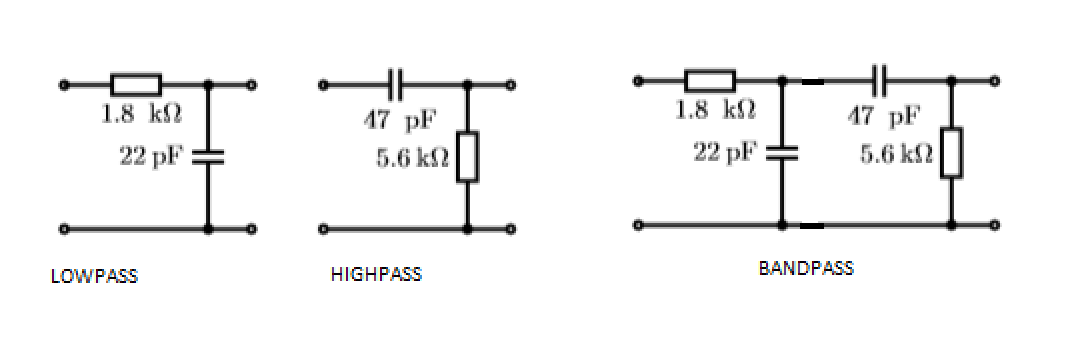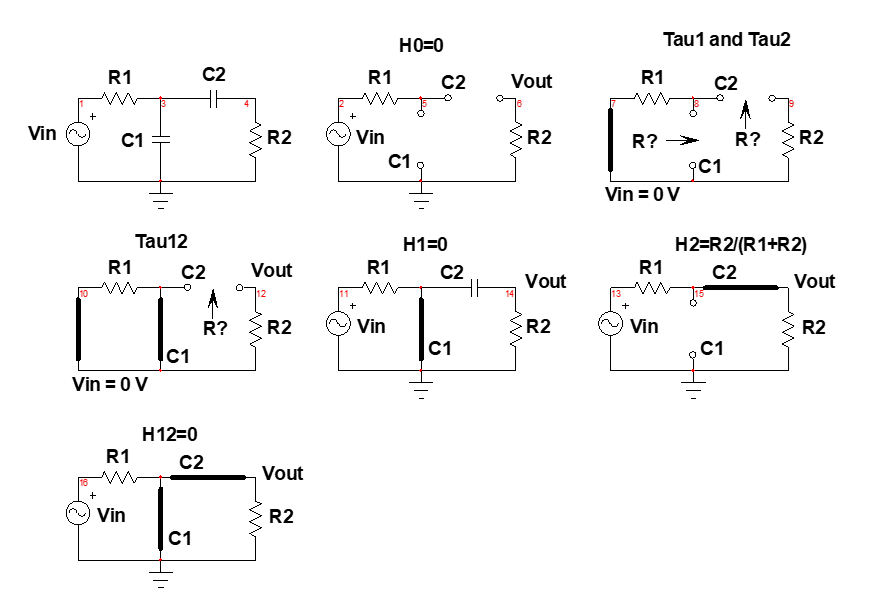I have the following (badly formulated) problem.
A passive first order lowpass filter gets cascaded with a passive first order highpass filter to form a bandpass as the following circuit diagram shows.
By how many percent does the lowpass behavior (upper pole frequency) of the resulting filter move with respect to the frequency of the pole of the original lowpass filter?
I tried to solve this problem using LT-spice, because I couldn't find a way to solve it algebraically.
Here is the lowpass filter simulated. I found the -3db gain to be at \$f=4.10\$MHz. And that must mean that the pole for this filter is at 4.10MHz, right?
I also tried to simulate the bandpass filter, but it turns out that it never reaches -3db gain.
So if I can't find the pole for the bandpass filter, I can't solve the problem. I hope someone can help me with this, either algebraically and or with LT-spice.
EDIT
Trying to solve this problem algebraically with a lot of help from VerbalKint.
Using the transfer function he provided, I tried to solve this with Maple.
As you can see I get the pole frequencies to be at: \$f=444180 \text{MHz} \$ and \$f=5.47141 \text{MHz} \$.
These frequencies are very close to what VerbalKint provided, but there is still a difference. I wonder what have gone wrong in my calculations.








